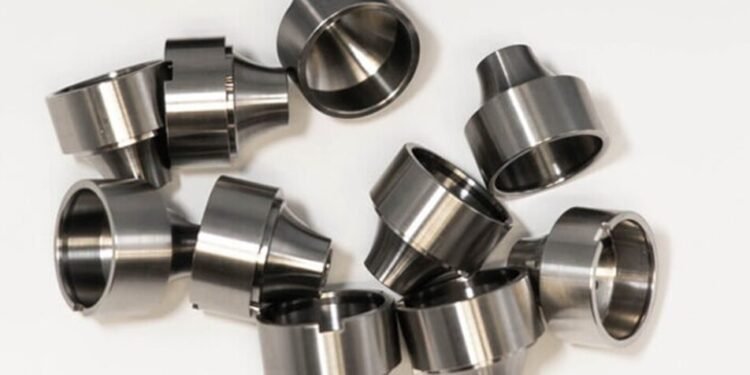Last Updated on January 20, 2025 by admin
Introduction to Stellite Alloys
Stellite is a remarkable alloy composed mainly of cobalt and chromium, known for its unique blend of wear, heat, and corrosion resistance. This alloying combination allows it to perform reliably under extreme conditions, making it an invaluable asset in modern engineering. Whether facing abrasive, high-temperature, or chemically aggressive environments, stellite shines as a robust solution that engineers and designers turn to when performance and longevity are at the forefront of their needs. It stands out as a material that is not only durable but also adaptable across various sectors, ensuring its place in advancing technological and industrial applications.
The inherent properties of stellite allow it to fulfill diverse roles, from enhancing safety in aerospace applications to ensuring the sharpness and precision needed in surgical instruments in the medical industry. Its versatility translates to a wide array of uses that extend beyond traditional engineering frameworks, paving the way for innovation and reliability in fields that demand superior material performance.
Key Properties of Stellite
- Wear Resistance: Stellite’s hardness is unparalleled, allowing it to withstand significant abrasive forces in many industrial processes. This property is critical in reducing downtime and maintenance costs, as components made from stellite require less frequent replacement than those made from less durable materials.
- Corrosion Resistance: As industries increasingly operate in harsher environments, materials that can withstand chemical attacks, corrosion, and wear have become invaluable. Stellite’s exceptional resistance to oxidation, chemical corrosion, and general wear makes it an ideal candidate for such scenarios, maintaining its integrity and functionality where inferior materials might fail. Its corrosion resistance mainly ensures long-lasting performance even in highly aggressive conditions, offering reliable protection against degradation that can compromise other materials.
- Temperature Stability: Many industrial processes involve elevated temperatures, and the ability of stellite to retain its mechanical properties under such conditions ensures that it can be used without compromise. This thermal stability is crucial in applications like turbines and engines, which operate at temperatures that would degrade ordinary metals.
Applications in the Aerospace Industry
The aerospace industry is characterized by its demand for lightweight, high-strength materials that can withstand extreme conditions. Stellite meets these needs with its exceptional robustness. It is used in components like turbine blades and exhaust valves, which must endure extreme stress and temperature. The reliability provided by stellite ensures that these critical components maintain their structural integrity and functionality, which is essential for the safety and efficiency of aircraft. This application highlights the alloy’s strength and ability to remain dependable even under the most challenging conditions encountered in flight.
Stellite in the Medical Sector
In the medical field, precision and reliability are non-negotiable. Stellite’s resistance to corrosion, combined with its biocompatibility, makes it an excellent material for surgical tools and implants. These tools must retain their sharpness and effectiveness throughout various procedures, minimizing the need for frequent maintenance or replacement. The alloy’s ability to withstand repeated sterilization cycles without degrading further underscores its value in medical applications. Surgeons rely on instruments made from stellite to deliver precise results, ultimately enhancing patient care through improved performance and reliability.
Usage in the Oil and Gas Industry
The oil and gas sector often functions in environments that pose significant challenges to material integrity, characterized by abrasive substances, elevated pressures, and corrosive conditions. Stellite addresses these challenges effectively due to its outstanding resistance to wear and corrosion, establishing it as a favored option for producing valve seats and drilling components. These parts must endure the aggressive conditions present during extraction and processing without succumbing to premature wear. Using stellite in these critical components helps ensure operational efficiency, reducing the risk of failures that could lead to costly downtimes or environmental hazards.
Innovations in Stellite Coating Technology
Advancements in coating technologies have expanded the application range of stellite, enabling even more excellent durability. Enhanced stellite coatings can be applied to various surfaces, significantly improving their wear and corrosion resistance. This innovation has significant implications for industries concerned with surface durability, such as automotive components or industrial cutting tools. Coating existing equipment with stellite extends the life and enhances the function of expensive machinery. These coatings help industries maintain optimal performance levels while controlling maintenance costs.
Challenges and Considerations in Manufacturing
While stellite offers considerable benefits, its use poses specific challenges during manufacturing and machining due to its hardness. Specialized tools and techniques are often required to fabricate stellite components, which can increase production times and costs. Additionally, stellite materials are more expensive upfront than standard alloys, necessitating a careful cost-benefit analysis when determining its application in projects. Despite these challenges, its advantages in terms of durability and performance often outweigh the hurdles, making them an investment in long-term efficiency and reliability.
Future Prospects of Stellite in Engineering
The ongoing demand for materials that combine strength, durability, and resistance heralds a promising future for stellite. As industries like transportation and energy evolve, the need for materials that can seamlessly integrate into new technologies while enhancing performance is paramount. Stellite is well-positioned to use its established benefits to support future innovations and develop cutting-edge engineering solutions. As research continues and new applications are discovered, stellite is expected to remain at the forefront of materials science, driving progress and ensuring durability in the ever-growing landscape of modern engineering.









